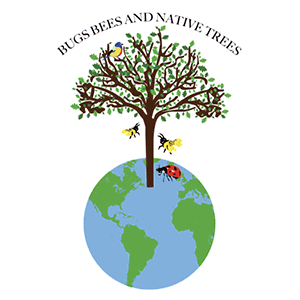FAQs
What type of trees should we plant?
We encourage people to plant semi-mature trees as they will require less maintenance following the planting and have a greater chance of survival than saplings. Beyond this, any native Irish tree is fantastic.
Check out our lists of native and common Irish trees here:
https://bugsbeesandnativetrees.com/trees/
When is the best time to plant trees?
The best time to plant trees in Ireland is between October and April.
How much space do we need to provide?
A 5x5m or 7x7m space is perfect for planting a copse of 10 trees.
Where can we source the trees?
You can source the trees from your local garden centre or tree stockist.
How tall will the trees grow to be?
Native Irish trees vary in height from 5m, such as the Spindle tree or Hazel tree, to 40m, such as the Ash tree or Oak tree. On average most native Irish trees grow to a height of about 15-25m.
How do we plant the trees?
10 steps to planting trees. – https://bugsbeesandnativetrees.com/plant-a-tree-in-10-steps/
Why are we planting trees?
To increase biodiversity and reduce the onset of climate change. – https://bugsbeesandnativetrees.com/trees/
When will the planting take place?
Our all-island tree planting weekend is taking place from the 12th-14th November 2021.
How much will the trees cost to plant?
A copse of 10 semi-mature trees with sufficient protection can cost up to €350 to plant. A copse of 10 saplings with sufficient protection can cost up to €18 to plant.
How do we ensure the trees are correctly planted?
Follow our guide and watch our video of how to plant a tree in 10 steps.
How do we sign up to the tree planting?
You can sign up by registering here. – https://bugsbeesandnativetrees.com/#registration-section
Who will plant the trees and maintain them?
Ideally students will lead the planting under the supervision of a teacher or member of staff and take on the responsibility of maintaining the trees following the planting.
How do students benefit from the process?
It is a practical way of students taking action to protect the environment, while also learning in the process. The trees they plant will improve air quality, bring more nature to their school campus and aid student well-being.
How do schools record that they have planted trees?
When you have completed your native tree planting please register your completed project at the COMPLETED PROJECTS section at the bottom of our projects page. You can do this by typing in your project number in the box provided. You will then be redirected to a site where you can document the number of trees planted. You’ll also be able to upload a photo of your planting group, and will be provided a space to document the species mix of trees planted.
What plants grow well under trees?
Plants such as Vinca, Cranesbill, Helebores and Ferns are all great for planting. Bulbs such as Bluebells, Crocus, Snowdrop and Anemone all grow well under trees.
What needs to be done to maintain the trees after planting and for how long will they need to be maintained?
After planting the tree, you need to water it for the first season. If you plant in Autumn, you only need to water from spring on once a week. If you plant in Spring or summer, you will need to water twice a week until October. The stake and tie need to be checked that it is still supporting the tree but not choking it. A mulch of organic matter in spring every year will help feed and retain moisture. Try to keep a meter square weed free around the tree.
What surfaces are best suited to planting trees?
Soil needs to be free draining and good quality. The soil should be easy to dig and crumbly. Introducing organic matter will improve poor soils.
